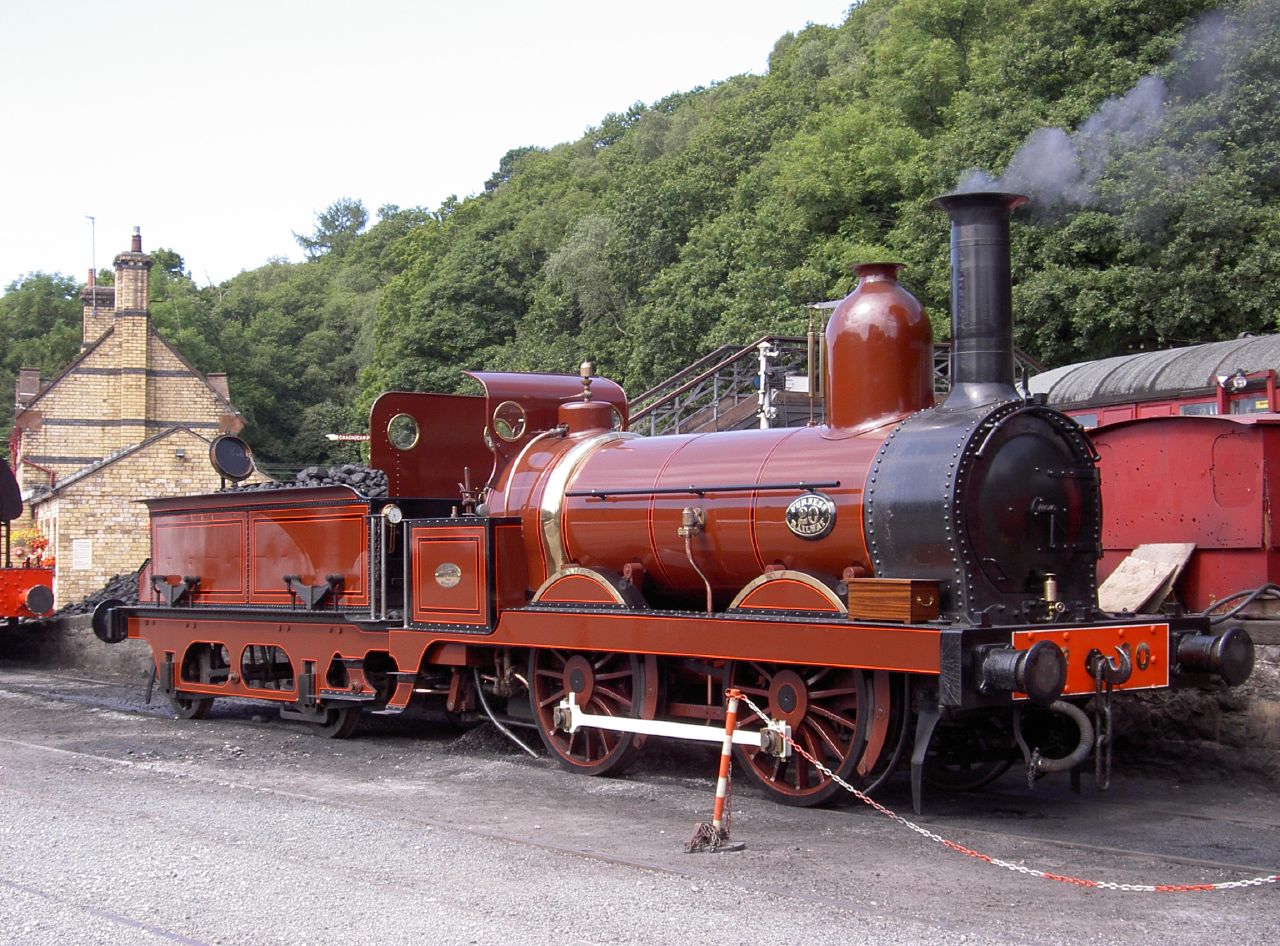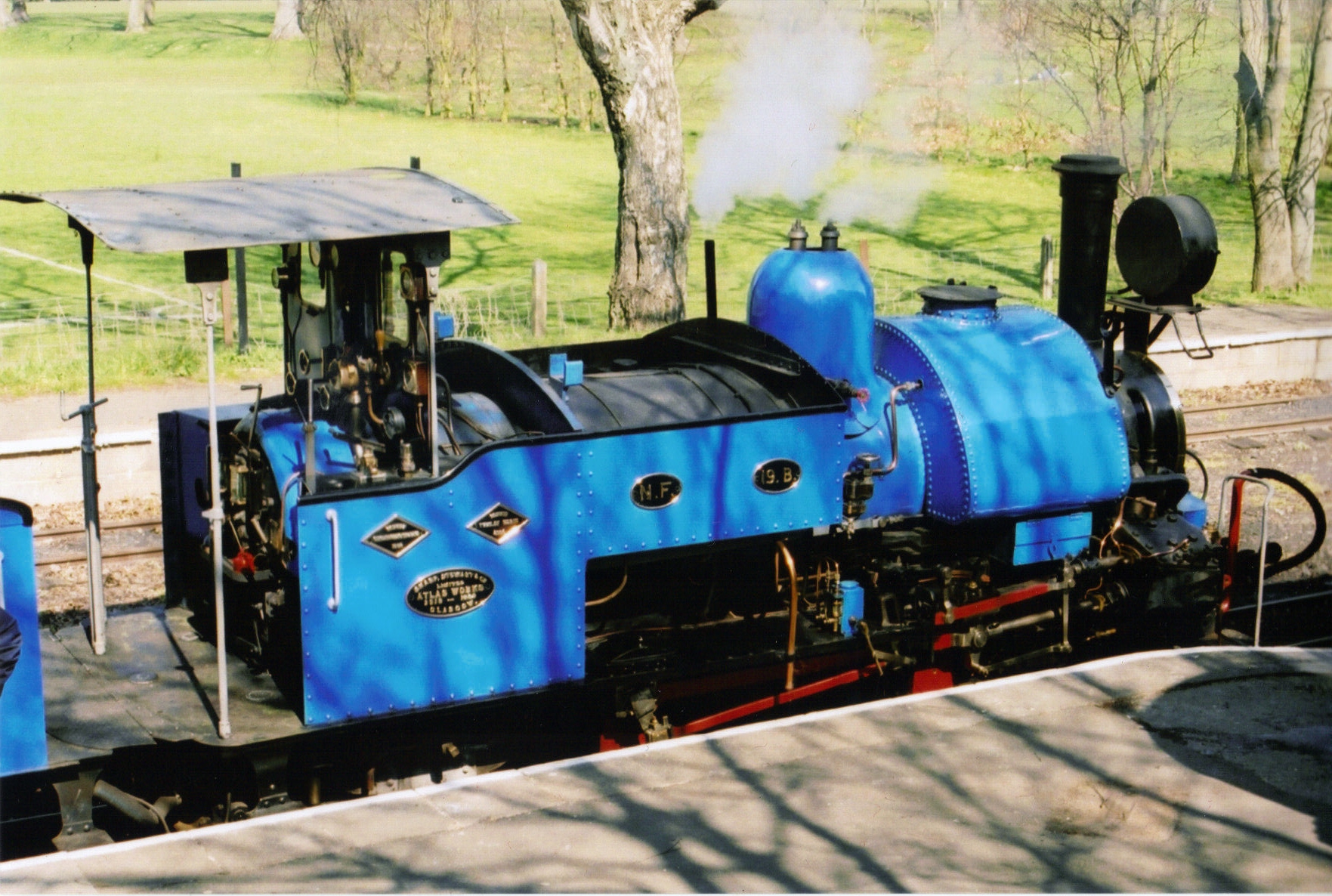|
LCDR R Class
The LCDR R class was a class of 0-4-4T locomotives on the London, Chatham and Dover Railway (LCDR). No. 207 (eventually no. 31666) is notable as being the last former LCDR locomotive to be withdrawn from service. The whole class was fitted with condensing apparatus for working on the Widened Lines. History For many years the London, Chatham and Dover Railway (LCDR) had favoured the 0-4-4T wheel arrangement for suburban and stopping passenger trains, and when more were required in 1890, consideration was given to ordering a further batch of the existing A2 class 0-4-4T (introduced 1883); it was then decided that a modified design was required. The R class locomotives were designed by William Kirtley as a development of his earlier A2 class, and 18 were built by Sharp, Stewart and Company in 1891. Numbering Their LCDR numbers were 199–216, which under the South Eastern and Chatham Railway became 658–675 from 1899. They were renumbered three more times: to A658–A675 b ... [...More Info...] [...Related Items...] OR: [Wikipedia] [Google] [Baidu] |
William Kirtley (railway Engineer)
William Kirtley (1840 – 7 October 1919) was an English railway engineer, and was the Locomotive Superintendent of the London Chatham and Dover Railway (LCDR) in England from 1874 until the merger to form the South Eastern and Chatham Railway at the end of 1898. Biography William was born in Warrington in 1840, the son of the locomotive engineer Thomas Kirtley (1810–1847). He was educated by his uncle Matthew Kirtley, Locomotive Superintendent of the Birmingham and Derby Junction Railway and later of the Midland Railway, following his father's premature death. He served as a pupil at Derby Works from 1854–1860, and from 1861 to 1864 he was Running foreman for the Midland Railway for the London District. In 1864 he was appointed superintendent of Derby Works. In 1874 he was appointed Carriage and Wagon Superintendent on the LCDR following the death of William Martley, and served until the merger to form the South Eastern and Chatham Railway at the end of 1898, when h ... [...More Info...] [...Related Items...] OR: [Wikipedia] [Google] [Baidu] |
LCDR A2 Class
The LCDR A class was a class of 0-4-4T steam locomotives of the London, Chatham and Dover Railway. The class was designed by William Kirtley and introduced in 1875. The A1 and A2 classes were similar, but had larger driving wheels. The differences between the A1 and A2 classes were minor: in particular, the A2 class had a larger heating surface. Numbering Ownership changes All the A, A1 and A2 class locomotives passed to the South Eastern and Chatham Railway The South Eastern and Chatham Railway Companies Joint Management Committee (SE&CRCJMC),Awdry (1990), page 199 known as the South Eastern and Chatham Railway (SE&CR), was a working union of two neighbouring rival railways, the South Easter ... in 1899. Number 570 was withdrawn in 1915 but the remaining locomotives passed to the Southern Railway in 1923. All had been withdrawn by 1926. References * * * {{SECR locomotives A 0-4-4T locomotives Railway locomotives introduced in 1884 Scrapped locomotives S ... [...More Info...] [...Related Items...] OR: [Wikipedia] [Google] [Baidu] |
Condensing Steam Locomotives
Condensing may refer to: *Condensation *Condensing steam locomotive *Condensing boiler *Condensing osteitis Condensing osteitis is a periapical inflammatory disease that results from a reaction to a dental related infection. This causes more bone production rather than bone destruction in the area (most common site is near the root apices of premolars ... {{disambig ... [...More Info...] [...Related Items...] OR: [Wikipedia] [Google] [Baidu] |
Sharp Stewart Locomotives
Sharp or SHARP may refer to: Acronyms * SHARP (helmet ratings) (Safety Helmet Assessment and Rating Programme), a British motorcycle helmet safety rating scheme * Self Help Addiction Recovery Program, a charitable organisation founded in 1991 by Barbara Bach and Pattie Boyd * Sexual Harassment/Assault Response & Prevention, a US Army program dealing with sexual harassment * Skinheads Against Racial Prejudice, an anti-racist Trojan skinhead organization formed to combat White power skinheads * Society for the History of Authorship, Reading and Publishing * Stationary High Altitude Relay Platform, a 1980s beamed-power aircraft * Super High Altitude Research Project, a 1990s project to develop a high-velocity gun Companies * I. P. Sharp Associates, a former Canadian computer services company * Sharp Airlines, an Australian regional airline * Sharp Corporation, a Japanese electronics manufacturer * Sharp Entertainment, an American TV program producer * Sharp HealthCare, ... [...More Info...] [...Related Items...] OR: [Wikipedia] [Google] [Baidu] |
Railway Locomotives Introduced In 1891
Rail transport (also known as train transport) is a means of transport that transfers passengers and goods on wheeled vehicles running on rails, which are incorporated in tracks. In contrast to road transport, where the vehicles run on a prepared flat surface, rail vehicles (rolling stock) are directionally guided by the tracks on which they run. Tracks usually consist of steel rails, installed on sleepers (ties) set in ballast, on which the rolling stock, usually fitted with metal wheels, moves. Other variations are also possible, such as "slab track", in which the rails are fastened to a concrete foundation resting on a prepared subsurface. Rolling stock in a rail transport system generally encounters lower frictional resistance than rubber-tyred road vehicles, so passenger and freight cars (carriages and wagons) can be coupled into longer trains. The operation is carried out by a railway company, providing transport between train stations or freight customer facili ... [...More Info...] [...Related Items...] OR: [Wikipedia] [Google] [Baidu] |
Railway Correspondence And Travel Society
The Railway Correspondence and Travel Society (RCTS) is a national society founded in Cheltenham, England in 1928 to bring together those interested in rail transport and locomotives. Since 1929 the Society has published a regular journal ''The Railway Observer'' which records the current railway scene. It also has regional branches which organise meetings and trips to places of interest and an archive & library. It has published definitive multi-volume locomotive histories of the Great Western, Southern and London & North Eastern Railways, and has in progress similar works on the London, Midland & Scottish Railway and British Railways standard steam locomotives. It also has published many other historical railway books since the mid-1950s. On 2 November 2016, the RCTS become a Charitable Incorporated Organisation (CIO), registered number 1169995. Its new Archive and Library (located within the former station-master's house at Leatherhead station) was opened on 6 Octobe ... [...More Info...] [...Related Items...] OR: [Wikipedia] [Google] [Baidu] |
LCDR R1 Class
The LCDR R1 class was a class of 0-4-4T locomotives on the South Eastern and Chatham Railway (SECR), which were based on an existing London, Chatham and Dover Railway (LCDR) design. History For many years, the two constituents of the South Eastern and Chatham Railway SECR - the London, Chatham and Dover Railway and the South Eastern Railway (SER) - had both favoured the 0-4-4T wheel arrangement for suburban and stopping passenger trains. The SER's most recent design was James Stirling's Q class 0-4-4T, which had been produced between 1881 and 1897, whereas the LCDR had the more modern R class 0-4-4T of William Kirtley's design, which dated from 1891. When more 0-4-4T engines were required soon after the formation of the SECR in 1899, the company had two options: to build more of either or both of the existing designs, or to produce a new design. It was intended that a range of standard designs would be produced which would be suitable for use across the whole SECR system, h ... [...More Info...] [...Related Items...] OR: [Wikipedia] [Google] [Baidu] |
Sharp, Stewart And Company
Sharp, Stewart and Company was a steam locomotive manufacturer, initially located in Manchester, England. The company was formed in 1843 upon the demise of Sharp, Roberts & Co.. It moved to Glasgow, Scotland, in 1888, eventually amalgamating with two other Glaswegian locomotive manufacturers to form the North British Locomotive Company. Early days Iron merchant Thomas Sharp and mechanical engineer Richard Roberts first formed a partnership, Sharp, Roberts & Co. (about which, see also company section in article on Roberts), to manufacture textile machinery and machine tools. They opened the Atlas Works in Manchester in 1828. They had built a few stationary steam engines, and in 1833 built a locomotive, ''Experiment'' for the Liverpool and Manchester Railway. It was a four-wheeled 2-2-0 with vertical cylinders over the leading wheels. After a number of modifications, three similar locomotives (Britannia, Manchester, and ''Hibernia'') were built in 1834 for the Dublin and Kin ... [...More Info...] [...Related Items...] OR: [Wikipedia] [Google] [Baidu] |
0-4-4
Under the Whyte notation for the classification of steam locomotives, 0-4-4 represents the wheel arrangement of no leading wheels, four powered and coupled driving wheels on two axles, and four trailing wheels on two axles. This type was only used for tank locomotives. In American cities, the type known as a '' Forney locomotive'', was used on the narrow curves of elevated railways and other rapid transit lines. In the UK 0-4-4 tanks were mainly used for suburban or rural passenger duties. Equivalent classifications Other equivalent classifications are: * UIC classification: B2 (also known as German classification and Italian classification) * French classification: 022 * Turkish classification: 24 * Swiss classification: 2/4 * Russian classification: 0-2-2 History Finland The Finnish Steam Locomotive Class F1 entered service with SVR in 1885 were used until 1935. One example is preserved at the Finnish Railway Museum. United Kingdom In the UK the earliest 0-4-4 ... [...More Info...] [...Related Items...] OR: [Wikipedia] [Google] [Baidu] |
Sharp Stewart And Company
Sharp, Stewart and Company was a steam locomotive manufacturer, initially located in Manchester, England. The company was formed in 1843 upon the demise of Sharp, Roberts & Co.. It moved to Glasgow, Scotland, in 1888, eventually amalgamating with two other Glaswegian locomotive manufacturers to form the North British Locomotive Company. Early days Iron merchant Thomas Sharp and mechanical engineer Richard Roberts first formed a partnership, Sharp, Roberts & Co. (about which, see also company section in article on Roberts), to manufacture textile machinery and machine tools. They opened the Atlas Works in Manchester in 1828. They had built a few stationary steam engines, and in 1833 built a locomotive, ''Experiment'' for the Liverpool and Manchester Railway. It was a four-wheeled 2-2-0 with vertical cylinders over the leading wheels. After a number of modifications, three similar locomotives (Britannia, Manchester, and '' Hibernia'') were built in 1834 for the Dublin and ... [...More Info...] [...Related Items...] OR: [Wikipedia] [Google] [Baidu] |

